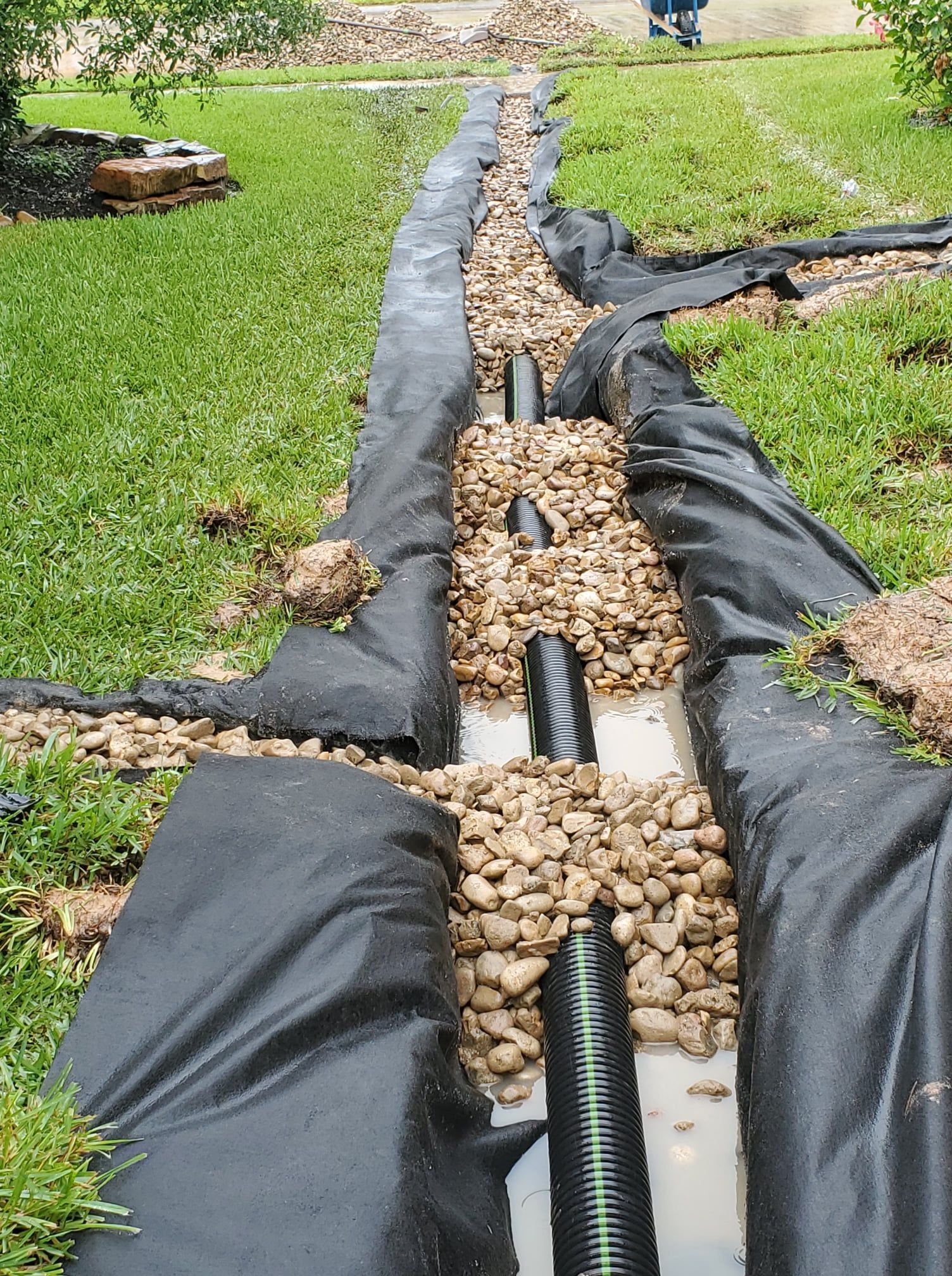French Drains Levittown, PA

How To Install French Drains
French drains Levittown, PA are drainage systems that drain polluted groundwater from houses and commercial buildings. French drains do not follow the usual path of gravity, as they are dug like a manhole. Usually, French drains have an installed French Drain Valve that can be turned "on" or "off", allowing the water to flow according to demand. These drainage systems are usually located on top of terraces, above ground pools, and on slopes.
A French drain or weeping tile or trench is simply a wide trench or filled with stone or gravel or containing an underground perforated pipe that diverts surface water away from a building. The main types of French Drains are perforated ones, gravity-fed, sloped wall. Perforated French Drains are generally placed above ground pools or soil erosion areas. Gravity-fed French Drains are installed in trenches along roads and railways. They are normally smaller than other types.

Contact Us
How do you prepare for French Drain Installation?
Before French Drain Installation, there are a few factors to consider. If you are planning to install French drains in an above-ground pool, soil erosion is an issue, as French drains are placed within the soil. You will need to have a professional French Drain installer inspect your foundation Repair before installing a French drain in an above-ground pool. He/she will be able to advise you on the type of French drains to install, the depth of their installation, and whether it is safe for the location of your home.
Most French drains are installed on the outside of a house. This is usually achieved by cutting a trench around the edge of your property. Once the trench is dug, a French Drain Company will then install a series of perforations in the trench. These perforations allow pressurized air to push sewage waste from the sewer system directly into the lower pipe. The pressure needed to force this waste down the pipeline depends on the slope of your property, as well as the thickness of the soil that is present. The number of perforations is usually four, but can be increased depending on the type of French drain you choose.
After the trenching has been completed, the upper French drain pipe is laid inside the trench. Usually, two pieces of pipe are laid side-by-side, with each connected to the main sewer line that is located above ground. A filter fabric, consisting of a mesh material that is close-fitting, is then placed inside the French drain, filtering debris such as leaves and dirt.
One thing to keep in mind when installing French drains is the need for slope. Most French drains are installed on sloping land, and if not installed properly, can cause damage to your lawn. The slope of your land can be increased by placing an extra height on your soil mix. If your soil is not sloping towards your house, adding a few inches of elevation to the bottom of your pipe will help it work properly.
Once the French drain is connected to the main sewer line, a new top layer is laid over the mesh French drains to keep debris from being carried down the pipe. It's important to position the French drain properly so that it doesn't blow across the yard. When installing a French drain, it's important to position it so that the mesh portion is over the pipe in the ditch or stream. Then, tie a knot at the top of the mesh pipe, securing it. Make sure the mesh is completely covered with the mesh fabric at the bottom. This will keep any debris from being carried down the pipe.
Finally, the French drains are installed over the drain pipe. Any dirt in the trench will act as an entrapment. To keep the dirt out, place a deep trench brush at the bottom of the trench. These simple steps allow you to install French drains more quickly, safely, and efficiently. And, with proper setup and maintenance, French drains will continue to protect your yard for many years.
Stay on top of the latest industry developments by visiting our blog
– a hub for professional insights and updates.

